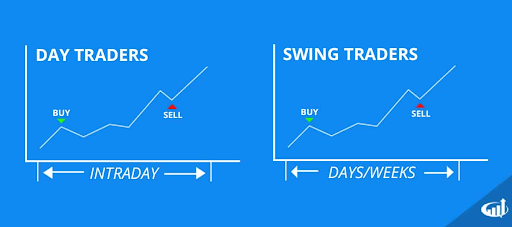
The Comprehensive Guide to Swing Trading: Key Insights and Strategies
Swing trading is a trading style aimed at capturing short- to medium-term price movements in financial instruments such as stocks, currencies, or commodities. It offers a balanced approach between the rapid pace of day trading and the patient approach of long-term investing. This guide condenses the essentials to help you understand and start swing trading effectively.
What Is Swing Trading?
Swing trading involves holding positions for several days to weeks to capitalize on price "swings." Traders aim to capture portions of a trend, buying during upward movements and selling before reversals. Using technical and, at times, fundamental analysis, swing trading applies to highly liquid assets that exhibit clear price trends.
Source: centerpointsecurities.com/
How Swing Trading Works
- Identify Trends: Use technical tools like moving averages and RSI to spot upward or downward trends.
- Set Entry and Exit Points: Define optimal price levels to buy and sell based on chart patterns and support/resistance levels.
- Risk Management: Always set stop-loss orders to limit potential losses and secure profits.
- Execute and Monitor: Enter trades based on your analysis and adjust targets if necessary.
Swing traders often rely on tools like moving averages, Bollinger Bands, and Fibonacci Retracements. Monitoring economic events, earnings reports, or geopolitical developments also aids decision-making.
Tools and Resources for Swing Trading
- Trading Platforms: Use platforms like TradingView or Thinkorswim for charting and executing trades.
- Charting Software: Analyze trends and patterns with tools that offer customizable indicators.
- Stock Screeners: Platforms like Finviz filter stocks based on criteria like volume and volatility.
- News Feeds: Stay informed through reliable sources like Bloomberg or MarketWatch.
- Automated Alerts: Set alerts for price levels to act quickly when conditions meet your criteria.
Advantages of Swing Trading
- Flexibility: Suitable for part-time traders; no need to monitor markets constantly.
- Efficiency: Captures significant price movements without excessive trading.
- Lower Costs: Fewer transactions compared to day trading.
Disadvantages of Swing Trading
- Overnight Risk: Price gaps due to market closures can lead to losses.
- Missed Long-Term Gains: Exiting early may forgo larger trends.
- Market Volatility: Sudden reversals can affect open positions.
Getting Started with Swing Trading
- Start Small: Trade a few positions to minimize risk while learning.
- Develop a Plan: Define clear entry/exit strategies and risk management rules.
- Leverage Tools: Use charting platforms, stock screeners, and alerts to identify opportunities.
- Monitor Markets: Stay informed about news and economic events.
Swing Trading vs. Day Trading
Source: www.investorsunderground.com/
Swing trading and day trading differ primarily in their timeframes, commitments, and associated risks. Swing trading involves holding positions for several days to weeks, allowing traders to capture significant market moves without the need for constant monitoring. In contrast, day trading focuses on short-term price changes(in detail we cover this topic in the article via th link ), with positions opened and closed within the same day, requiring intensive attention and quick decision-making.
When it comes to risk exposure, swing traders face overnight and weekend risks due to market closures, which can lead to unpredictable price gaps. Day traders avoid these risks by closing all positions before the market shuts down. However, the frequent trades in day trading result in higher transaction costs compared to the fewer trades typically executed in swing trading.
Swing trading suits those seeking flexibility and moderate engagement, while day trading requires constant attention and quick decisions.
Profitability and Suitability
Swing trading can be profitable with disciplined strategies and proper risk management. It appeals to those looking for a flexible approach to active trading without the high intensity of day trading. Success requires mastering technical analysis, monitoring trends, and sticking to predefined plans.
Final Thoughts
Swing trading offers a balanced way to participate in financial markets, leveraging both technical tools and strategic planning. By combining flexibility with a disciplined approach, it enables traders to capture market opportunities effectively. While risks exist, a well-executed strategy can help traders navigate swings and achieve consistent gains.
